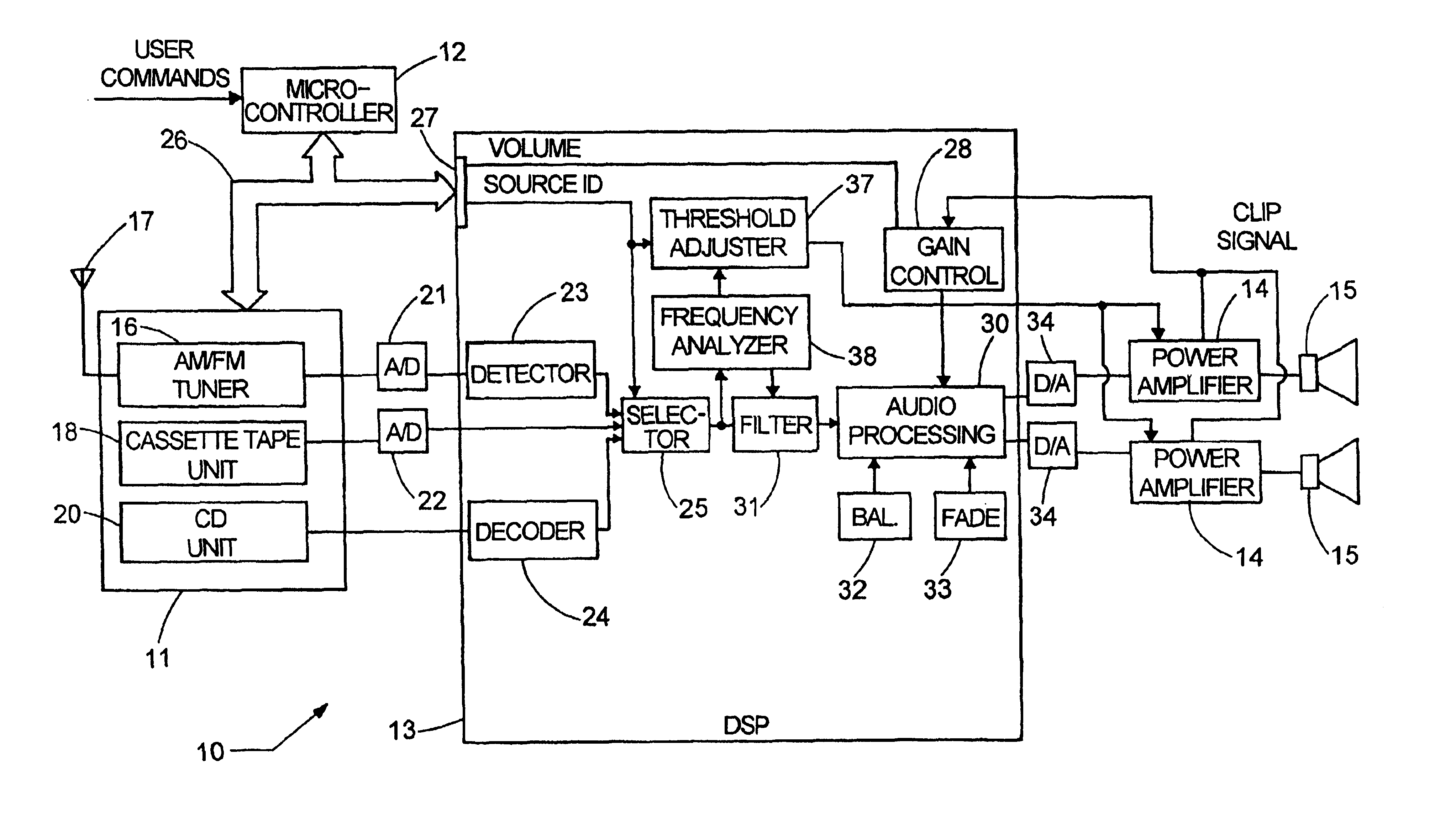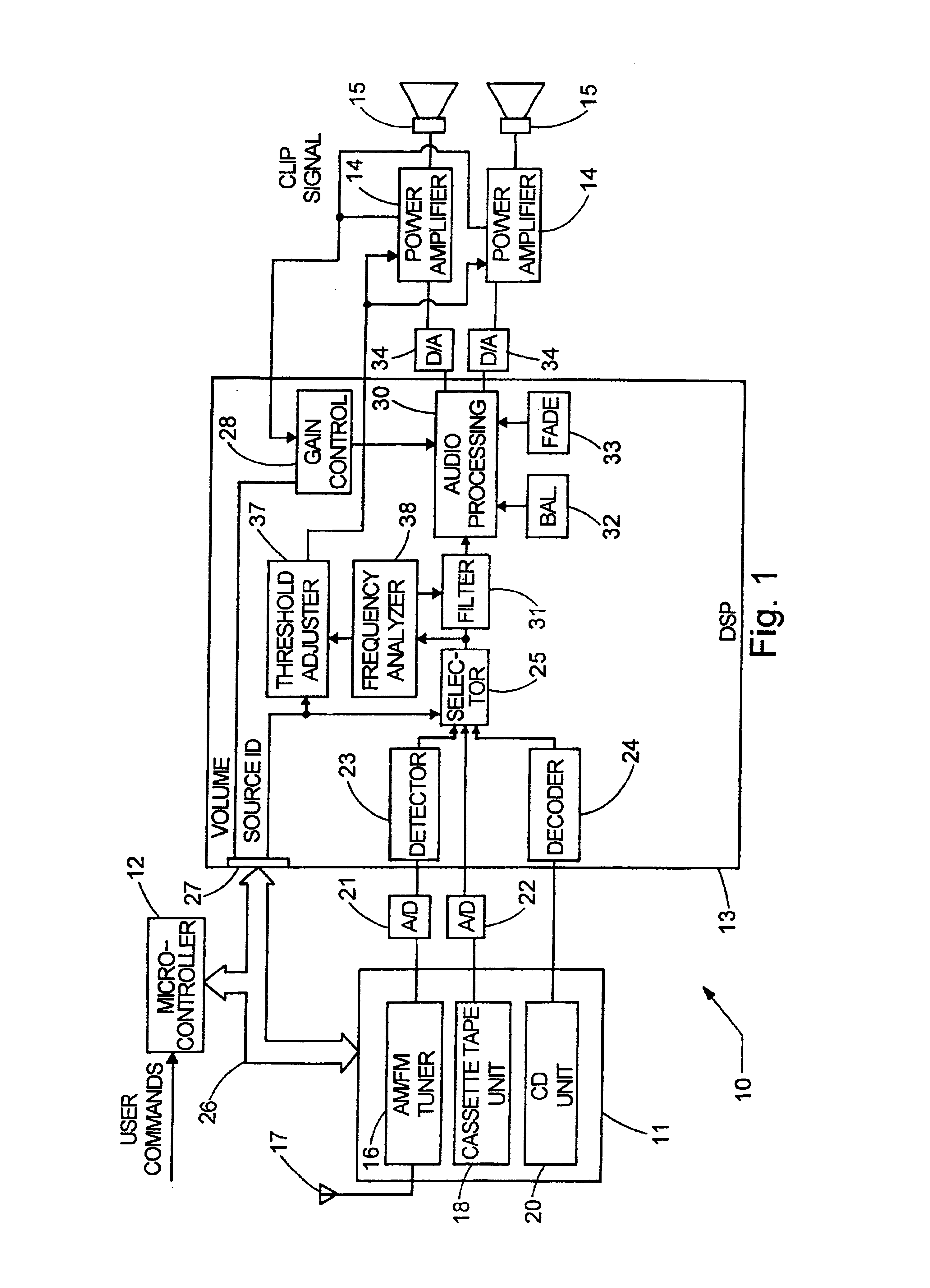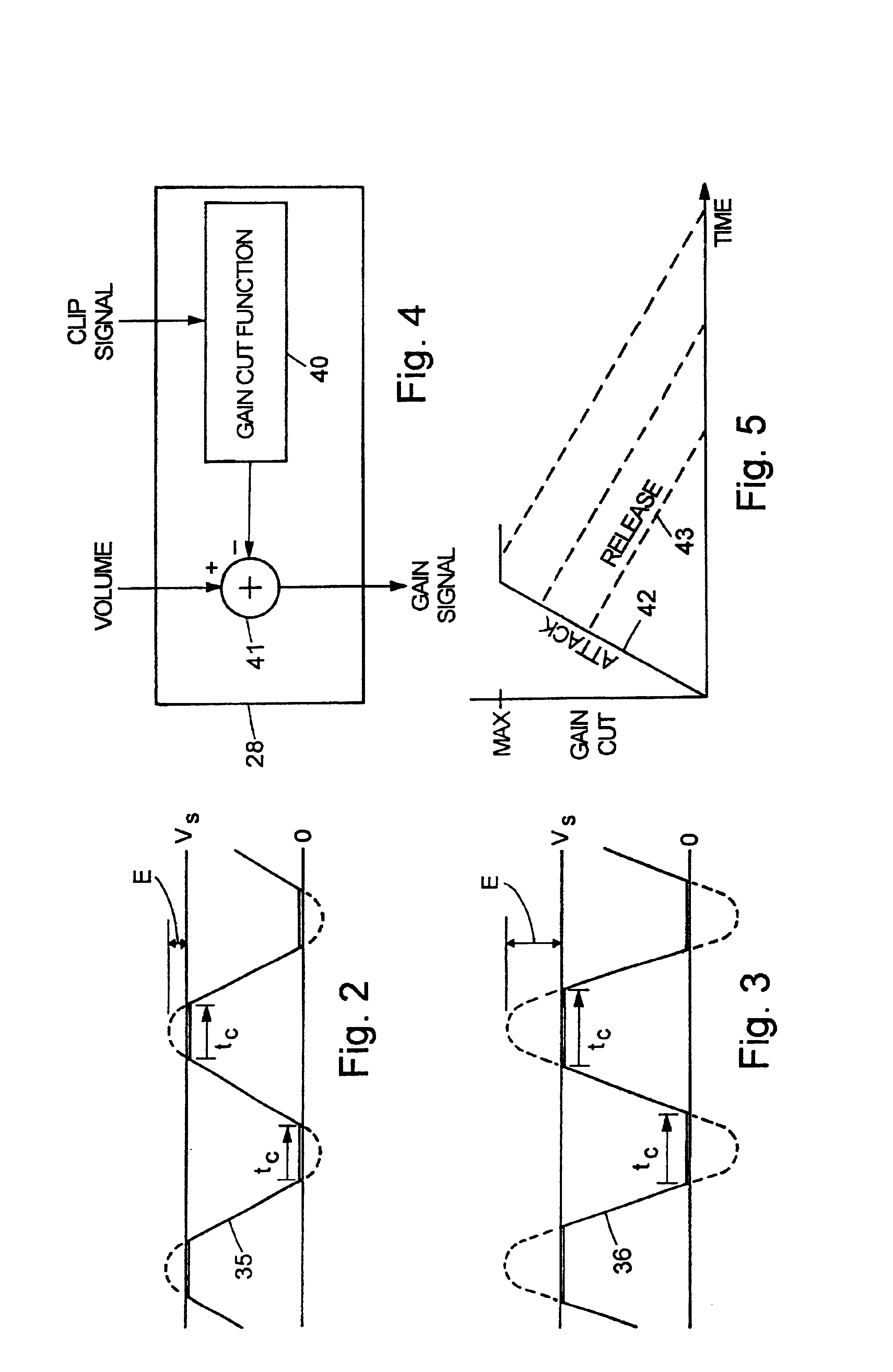Audio amplifier with voltage limiting in response to spectral content
a technology of spectral content and audio amplifier, which is applied in the field of audio systems, can solve the problem of reducing the controllable gain of the gain limiter
- Summary
- Abstract
- Description
- Claims
- Application Information
AI Technical Summary
Benefits of technology
Problems solved by technology
Method used
Image
Examples
first embodiment
[0022]In a first embodiment, the present invention detects the likelihood of reproducing a band-limited audio signal in response to the audio source from which the audio signal is being obtained. For example, when an AM radio tuner is providing the audio signal, it is known that potentially-masking higher frequency signals will not be present since AM broadcasts cannot reproduce them. However, a band-limited audio signal can also be present while using a wideband audio source, such as listening to a piano solo on a CD, for example. Therefore, in an alternative embodiment, a real-time spectral analysis of the audio signal is performed, whereby an appropriate amount of distortion is allowed at all times regardless of the chosen audio source.
[0023]Referring now to FIG. 1, an audio system 10 includes audio sources 11 controlled by a microcontroller 12 and providing their respective audio signals to a digital signal processor (DSP) 13. Processed audio signals are eventually amplified in ...
second embodiment
[0033]In a second embodiment also shown in FIG. 1, a frequency analyzer 38 receives the audio signal and characterizes the actual frequency content of the audio signal at any particular time. A signal characterizing the spectral, high frequency content of the audio signal at that time is provided to threshold adjuster 37 for selecting a distortion threshold in response to the specific high frequency content.
[0034]A preferred implementation of this second embodiment is shown in greater detail in FIG. 7. Filter 31 is an adaptive filter of the type disclosed in U.S. Pat. No. 6,154,547, incorporated herein by reference in its entirety. This filter adaptively controls its upper cutoff frequency so that the filter output contains a fixed (high) percentage of the energy entering the filter. In this way, the filter bandwidth is adaptively set to be just wide enough to contain nearly the entire desired signal, thereby eliminating any extraneous noise at higher frequencies. An LMS adaptation ...
PUM
 Login to View More
Login to View More Abstract
Description
Claims
Application Information
 Login to View More
Login to View More - R&D
- Intellectual Property
- Life Sciences
- Materials
- Tech Scout
- Unparalleled Data Quality
- Higher Quality Content
- 60% Fewer Hallucinations
Browse by: Latest US Patents, China's latest patents, Technical Efficacy Thesaurus, Application Domain, Technology Topic, Popular Technical Reports.
© 2025 PatSnap. All rights reserved.Legal|Privacy policy|Modern Slavery Act Transparency Statement|Sitemap|About US| Contact US: help@patsnap.com



